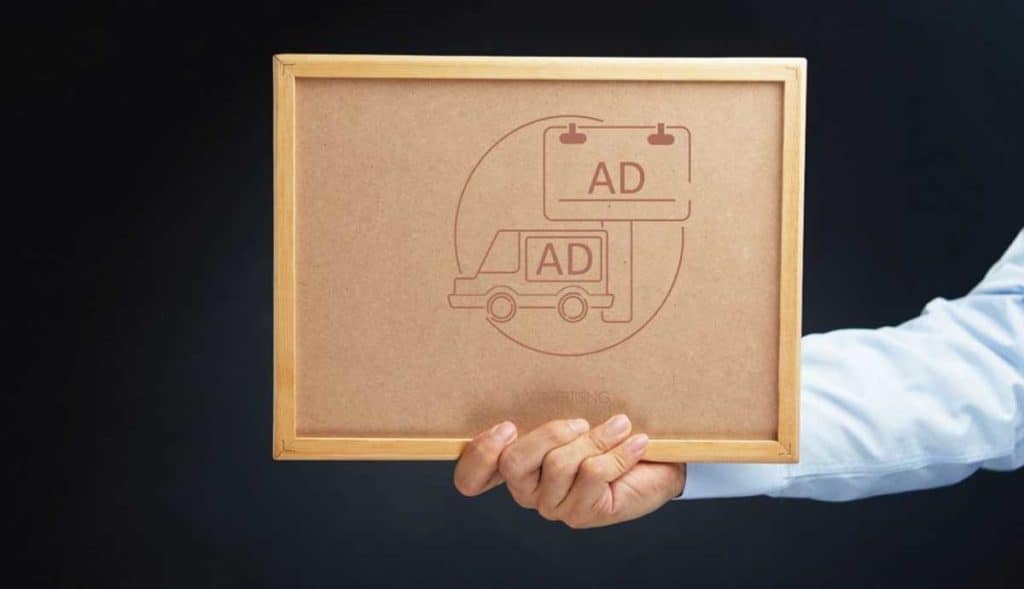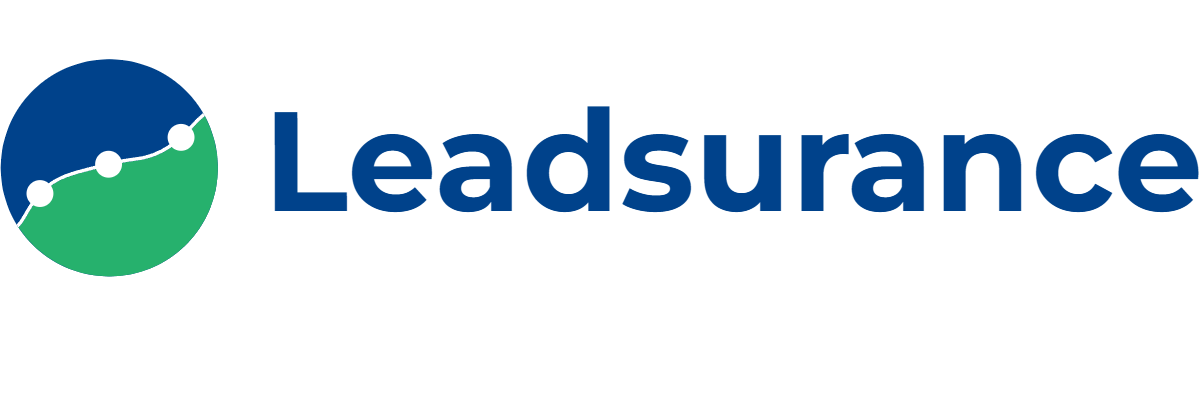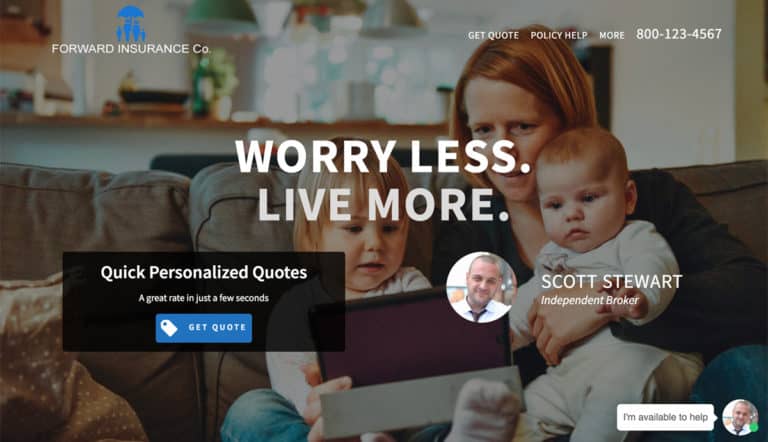Advertising is important for most companies, but for life insurance companies or agents, your marketing strategies are crucial for success.
Why is this?
Life insurance is not viewed as a commodity like food, housing or transportation and so consumers must be marketed life insurance products in order to become educated on them and realize their benefits.
With many products such as grocery or clothing stores, clients have an immediate and physical need that needs to be fulfilled. They need clothing and food for survival and therefore these expenses are considered a normal part of life.
It doesn’t require marketing to convince someone to wear clothes or eat food.
Life insurance is also critical but few of us are planning on dying any time soon so we tend to not think about how we would leave our loved ones in the event of an untimely death.
This isn’t necessarily a service that your clients will go and seek out on their own. So, people need to be reminded of this service with life insurance marketing and advertising.
In today’s post, we will provide a quick guide to help you start life insurance advertising. You may also want to learn how to set up Facebook ads for life insurance.

What Are the Benefits of Life Insurance Advertising?
Advertising life insurance is very beneficial whether you work for a company or are an independent agent.
- Reminds clients of this valuable service so they and their families can be protected
- Reminds existing clients to update their policies
- Makes it easy for clients to contact you or your company
- Regular advertising helps the client choose you over competitors
- Increases public brand recognition
- Your adverts can be valuable educational tools so customers will know more about your products or packages
- Previous and potential customers can learn about your new products or packages
- Expand your client base outside of your normal area of operations
There are additional benefits to advertising life insurance products but the above list covers the primary ones.
How to Go About Life Insurance Advertising
Insurance advertising is a bit trickier compared to advertising a physical product.
Your clients will need to take your word for it, and it isn’t effortless to get people to read otherwise boring materials (especially considering the morbid topic).
For that reason, you will get the best results by creating educational content and using it to market your products and services.
Furthermore, you can drive even more conversions in your advertisements by utilizing video marketing.
Here are some of the best steps to take when you are getting into advertising for life insurance.
Compliance: Consider Your Marketing Limitations
As an insurance agent, you should be familiar with compliance. You will need to comply with strict marketing and branding rules when advertising your products.
It is very important to check with your company’s compliance guidelines (and any relevant municipality guidelines) before you post anything.
Learn all there is to know about your products and about the design terms before you start working on advertisements.
Rules can include aspects such as specific logos or images that you might need to use on marketing content and others. Or you may not be able to say certain words or phrases when marketing certain products.
Alternatively, you may be required to include a disclaimer containing specific language when marketing some products.
If you have your own insurance company, you will be able to enjoy more freedom when it comes to advertisement designs and posts. But, it is still a good idea to narrow your designs down to a specific look or image for the sake of branding.
Research and Insights
It is important to do some research on your product and customers before you start marketing.
- Find out which of your competitors are advertising
- Research and analyze the best keywords to use in your campaigns
- Do an analysis of your current website traffic and market reach
- Analyze your target audience
- Find out about the best social media channels to advertise on to reach your target audience
- Estimate the size of the market you can advertise your products to
Research is very important before you start advertising because with proper analytics you can see whether your future advertisement strategies are important.
Set Goals
After you learn what the current status of your company is, it is time to start setting some new goals for your business.
- For example, a one-week goal could be to run your first advertising campaign and collect data to analyze.
- A one-month goal might be to adjust and optimize your advertising campaigns based on your first week of data.
- Finally, a year goal could be to acquire ‘X’ number of new customers utilizing $X advertising budget.
With proper goals in place, you can work harder to reach these goals and you will know which areas will require more attention.
Create a Content Strategy
It is always hard to figure out what type of content to share on social media and other sites. In this step, you will need to start planning your content.
The first step is to identify what type of outcome you want to receive from the content.
- Do you want to simply improve brand recognition? Catchy quotes or gorgeous images with your logo are a great way to start.
- Do you want to launch a new product? You will need informational flyers or infographics to share. A YouTube video can also be a very helpful tool for new product launches.
- Do you want to educate the market? Visual advertisements can help you educate the public about the importance of getting life insurance.
The type of content you want to share or the main goal of your advertisement will have a huge impact on the content you include.
Content Creation
In this step, you will need to create the content you identified in the previous step.
One of the toughest parts of digital marketing is content creation. It isn’t very easy to create captivating flyers, business cards, and social media posts that look professional.
Consider hiring a graphic designer during your startup phase. Your graphic designer can assist with the visual aspects of various marketing tools such as your logo, banners, flyer templates, newsletter templates, business cards, and so on.
- Business cards
- Your business’ logo
- Business colors (think school colors)
- Flyers and brochures
- Infographics and presentations
- Videos
- Case studies
- Blog posts
- E-books
- Social media posts and/or advertisements
- Emails/newsletters
- Podcasts
- Photos
- Testimonials
It is always better to invest in a wide range of content types. With a variety of content types, you will be able to reach more potential customers.
Read this article for insurance content topic ideas.
Create a Marketing Calendar
Another tricky part of advertising is to identify a proper advertising schedule. Marketing on social media sites, for example, can be very distracting. You may start to post a single flyer on social media then only to spend several hours wasting time looking at memes or funny videos. Creating a marketing calendar, or checklist can help you maintain your focus by setting deadlines.
It is also very easy to forget to distribute content. Before you know it, a whole month may have passed by without a single social media post on your page or without any new articles on your blog. In doing so, you will have missed a lot of opportunities to market your products and get new clients.
With a marketing calendar, you will be able to stay right on schedule when it comes to posting and sharing your advertisements on a regular basis. Marketing calendars and schedules also make it easier to see which products or services are getting enough notice and which ones need a bit more focus.
There are dozens of free and paid marketing calendar services available that can be integrated into other aspects of your business. Or, you can always go the old-fashioned paper route.
- Monthly newsletters
- Weekly blog posts
- Daily social media posts
- Weekly social media post boosting
- Monthly advertisements in your local newspaper
- Daily or weekly Google PPC advertisements
- Annual YouTube video creation and posting
- Flyer printing and distribution every three months
- Monthly podcasts or radio advertisements
- Permanent banners and billboards
When you are first starting out, don’t over-schedule your calendar. It is better to ease into your publishing schedule and remain consistent. You can always increase the frequency at which you publish content over time.
Identify Distribution Channels
Before you start sharing your advertisements, it is important to identify the best platforms and channels to share.
Marketing can be expensive, especially if you want to boost certain posts so they will reach people who are most likely to invest in your company or services. It can also take a lot of time to post on a huge variety of channels.
To save time and money, it is best to focus on the most successful and popular distribution channels, and particularly the channels that your intended customers use.
- Email (Yes, you can place advertisements in Gmail)
- Google PPC
- Facebook Advertising
- Pinterest Ads
- Twitter Ads
- Instagram Ads
- YouTube Ads
- LinkedIn Ads
- Local radio stations
- Flyer distribution through the postal boxes and/or newspapers
- Event advertising
- Roadside banners and billboards
It is important to research the effectiveness of these distribution channels. Advertising in your local newspaper can be great for reaching locals and for brand recognition but you won’t be able to reach prospective clients that might live in another city. Adding flyers to a postal box won’t help you much if no one ever reads these flyers.
Some social media channels or groups are also much more successful than others. Facebook and LinkedIn, for example, might be more successful for business advertising in your industry compared to Twitter and Instagram.
Research what your customers use and build your advertisements based on your results. You should also research the best times for posting or sharing your advertisements.
Distribute Your Content
Once you have identified the best places to use for advertising and once your content has been created, it is time to start publishing.
Regular publishing is very important for success, but you also need to keep your advertisements limited, so they don’t end up annoying your followers.
Daily email marketing, for example, can easily get your company email address branded as a spam email.
Just remember to pick a reasonable publishing schedule and stick to it. Staying consistent is going to be very important for your success in converting leads who don’t convert on the first few ads they see.
You should identify a publishing schedule that is sufficient yet not over the top. Here are a few good tips to help you get started:
Email Marketing
Share monthly newsletters and only send out emails when there is a new deal or huge promotion that clients need to be aware of.
Read our complete guide to email marketing for insurance agencies.
Social Media
Daily posts are important but don’t allow your posts to be just about your company. Mixing your content up with quotes, important information, facts, and local news is a great way to encourage engagement with your audience and to keep your social media accounts from looking dull and boring.
- 2 – 3 times per week – Business posts that include your flyer, company deals, product marketing, or business information
- 1 – 2 times per week – Motivational quotes, happy day quotes, quotes that are relevant to your company, or inspirational content
- 1 – 2 times per month – General information about life insurance such as international life insurance news or the fact that September is life insurance awareness month
Check out our complete guide to social media for insurance companies as well as these free life insurance social media posts and of course our collection of shareable insurance memes.
Local Advertising
The frequency of your newspaper or radio adverts will depend on your budget. Marketing can be expensive, especially if you are boosting posts on social media. If you can only afford a small advertisement once a month then that is perfectly fine as long as your social media marketing is consistent.

Banners and Billboards
These are clever investments because they can for a long time. If you have a physical site, have a couple of big billboards and banners installed to make it clear what your space does. These will act as permanent advertising tools that don’t always have large long term costs.
Flyer Distribution & Direct Mail
Printing is expensive (and it probably isn’t ideal for the environment). It is best to reserve these distribution channels for special occasions, such as a huge promotion.
You can also send out direct mail insurance solicitation letters to educate prospects and convert leads.
Engagement
Finally, you need to try to encourage your audience to engage with you socially. This can be anything from a simple “like” on Facebook to a full-on quote request following an email campaign.
It is very important to reply quickly to engaging clients so that they know that they are valued customers.
Final Thoughts
Advertising isn’t something that is going to be perfect right from the start. There will be lots of kinks to smooth out until you figure out what strategies are best for achieving success.
We hope that this guide helped you get started on advertising, and if you need any other marketing advice then we welcome you to have a look at some of our other guides.






